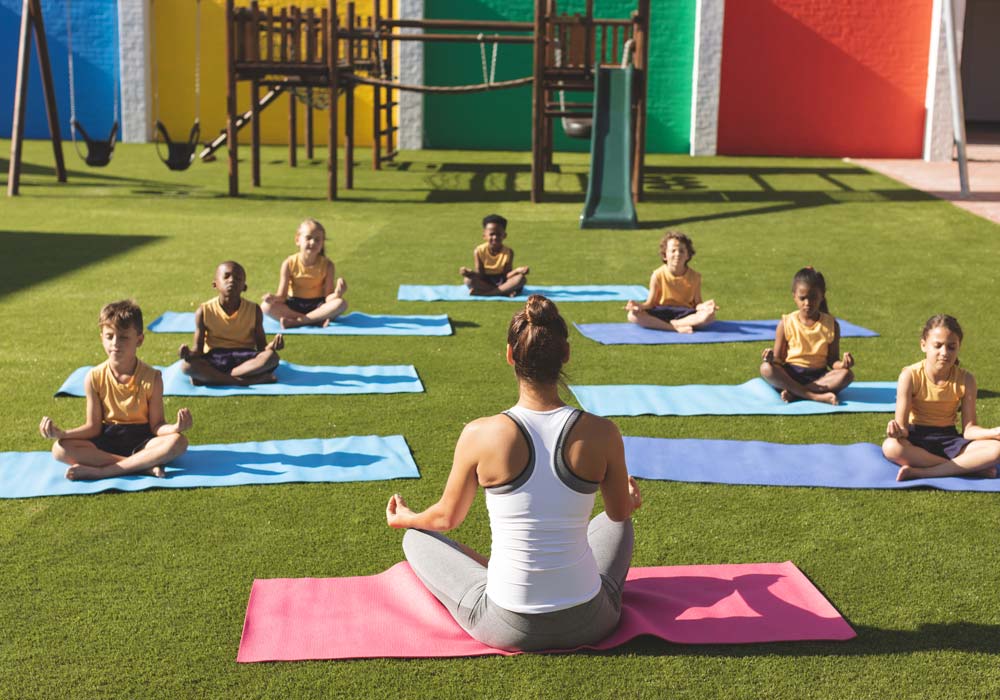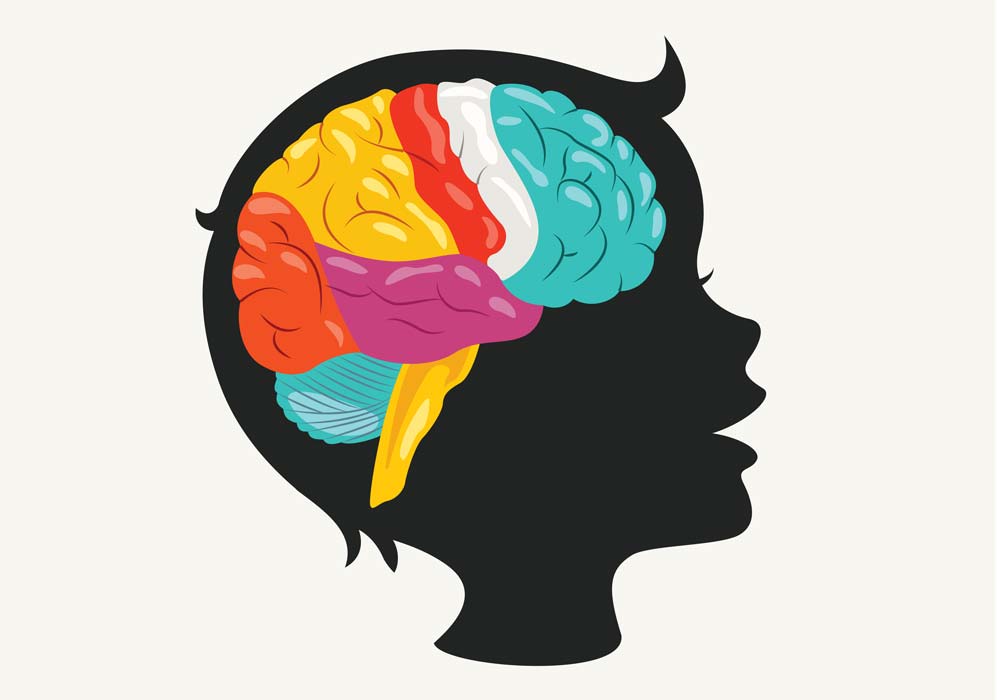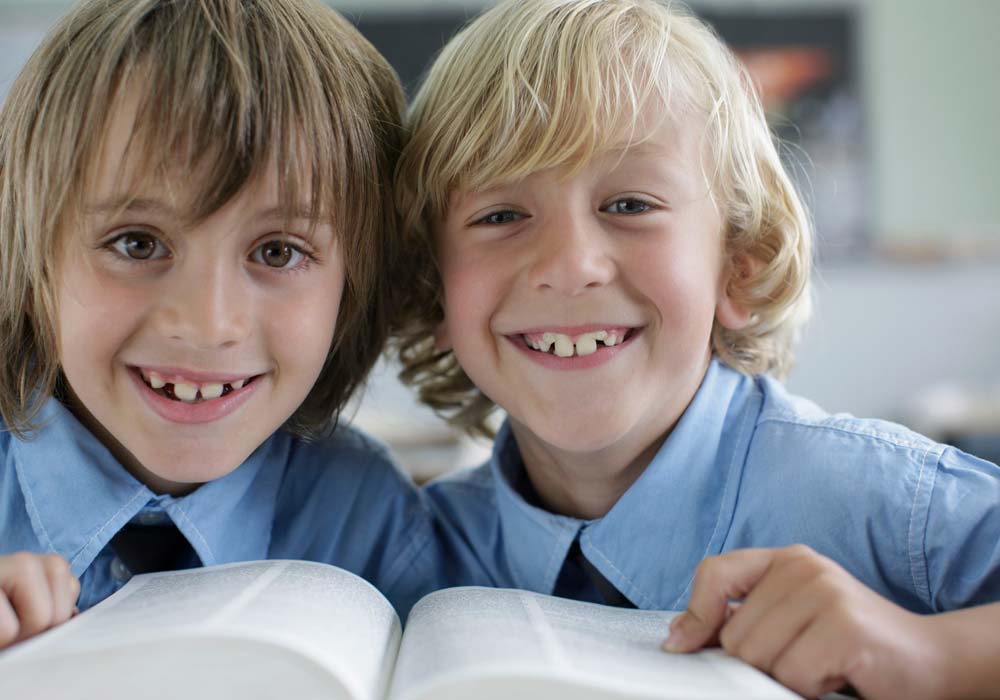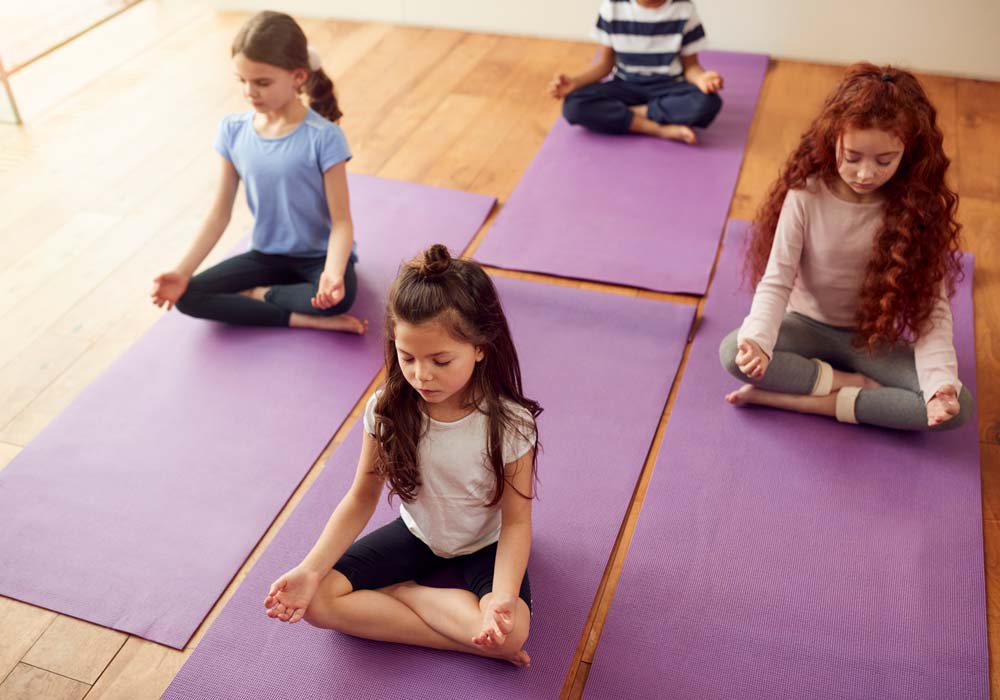Why we need mindfulness, yoga and breath in schools now more than ever

Mindful meditation and yoga have been shown to be helpful in supporting a variety of mental and physical health conditions, social and emotional development, well-being, learning and cognition in children and adults.
The practice of mindfulness and yoga has also been proven to assist in reducing anxiety, depression, stress and pain. It has also been found to improve sleep quality and academic performance.
With mental illness statistics in young children and teens the highest they have ever been, it is time to change the way we think about mental health and wellness in schools.
How mindful work can benefit young children
The results from studying mindfulness-based interventions (MBIs) conducted with children and adolescents over the past 5 years are very encouraging. The studies conclude that mindfulness-based interventions can significantly improve a broad range of mental and physical health problems in young children and adolescents.
The research included both children, with and without problems, and was conducted in a variety of settings including at school, within medical offices, and in the general public.
**Evidence for the Impact of Mindfulness on Children and Young People Katherine Weare Emeritus Professor, Universities of Exeter and Southampton
The studies indicated the following outcomes:
- Mindfulness has a direct impact on executive function which refers to a set of cognitive skills that are used in the planning and execution of tasks. These skills include working memory, mental flexibility, and inhibitory control.
- The study goes on to show how mindful exercises have a positive impact on developing social and emotional skills in young children and teenagers. For example, it can help with self-control, emotional regulation and socialising. It can also help to reduce aggressive behaviours and promote pro-social behaviour. In turn, this encourages better relationships with peers, parents and teachers.
- It's not a difficult activity to perform, and it can be done almost everywhere.
- It has no harmful side effects and cannot cause any damage.
- The rewards from regular mindful exercise are realised fairly quickly, they are not expensive to implement, and are enjoyed by both teachers and students simultaneously.

The science behind the suspicion
How mindfulness and breathing exercises can change the structure of the brain.
Brain imaging studies have shown that mindful activities can change the structure of the brain in a number of ways, including increasing grey matter density in areas associated with learning, memory, self-awareness and compassion.
It also decreases grey matter density in the amygdala, which is responsible for fear, anxiety and stress. These changes suggest that it can help to improve cognitive function and emotional well-being. *(Hozel et al, 2011).
There are continuing studies and evidence to support the benefits of mindfulness in children. It would also indicate that early intervention holds the key to resilience and emotional intelligence in young people.
It is clear that mindfulness can have a positive impact on mental and physical health, social and emotional skills, and overall well-being in both early childhood and primary school students.

Can mindfulness really impact school culture?
In a study of over 6000 school-aged children, comprising of more than 70 studies, the following observations were noted between those that practiced mindful awareness against those that did not.
62% of those who practiced showed better behavioural regulation and emotion
66% performed better academically than those who did not
66% showed lower depression and anxiety scores than those who did not
64% who practiced exhibited better social skills than those who did not
*Smiling Minds
Why isn't mindfulness, yoga and breath, taught in all schools then?
Busting the myths
The question that begs an answer is “Why is yoga and mindfulness not exercised in every school from early childhood through to primary school and beyond?”
Myth 1 - It's a religion
Unfortunately, some believe that mindfulness and yoga is a religious exercise. This, however, could not be further from the truth.
Both Yoga and Mindfulness are a science-based secular practices that can be performed by people from any belief system or religion, or no religion at all.
Mindfulness is simply paying attention to the present moment in a non-judgmental way, while yoga combines mindful movement, breath and mindfulness to nurture the development of the whole self – physical, energetic and mental/emotional.
Myth 2 - It's too difficult for a child
This is also not true. Children love to practice yoga and mindfulness! Both can be taught to early childhood children and primary school students in a way that is developmentally appropriate and engaging, and has been shown to be effective with children as young as 2 years old.
Myth 3 - It's time-consuming
Another main reason why yoga and mindfulness is not more widely taught in schools is due to a lack of time and resources. Teachers are already stretched thin and adding another thing to their plate can seem like too much.
However, mindfulness and yoga can be incorporated into any school day, no matter how busy. It can be done in as little as 5 minutes and does not require any special equipment or preparation. Beth Borowsky from The Karma Class has devised the easy-to-learn NESA accredited professional development program that can be easily integrated into a regular school day.
Myth 4 - It's costly
There is a misconception about the cost of establishing a mindfulness and yoga program at school. It doesn't have to be costly at all. In fact, teachers and whole schools are able to enrol in affordable professional development courses that provide them with all the resources they need to easily get started. The PD courses not only contribute to the health and wellbeing of the teachers and students but also accredit PD hours to their ongoing NESA or general professional development.

The Future of Mindfulness in Schools
As the benefits of mindfulness incorporating yoga and breath become more widely known, accepted and supported by research, hopefully we will see it being integrated into school curriculum as a regular daily activity. It has been shown to be an effective intervention for many different areas, it is affordable and easy to implement. Perhaps, most importantly, it is something that benefits everyone – teachers and students – by providing health and wellbeing tools for life.
If you are interested in bringing yoga breath and mindfulness into your school please contact us to find out more about our professional development courses for teachers, whole school professional development and in-school and early childhood yoga classes.
